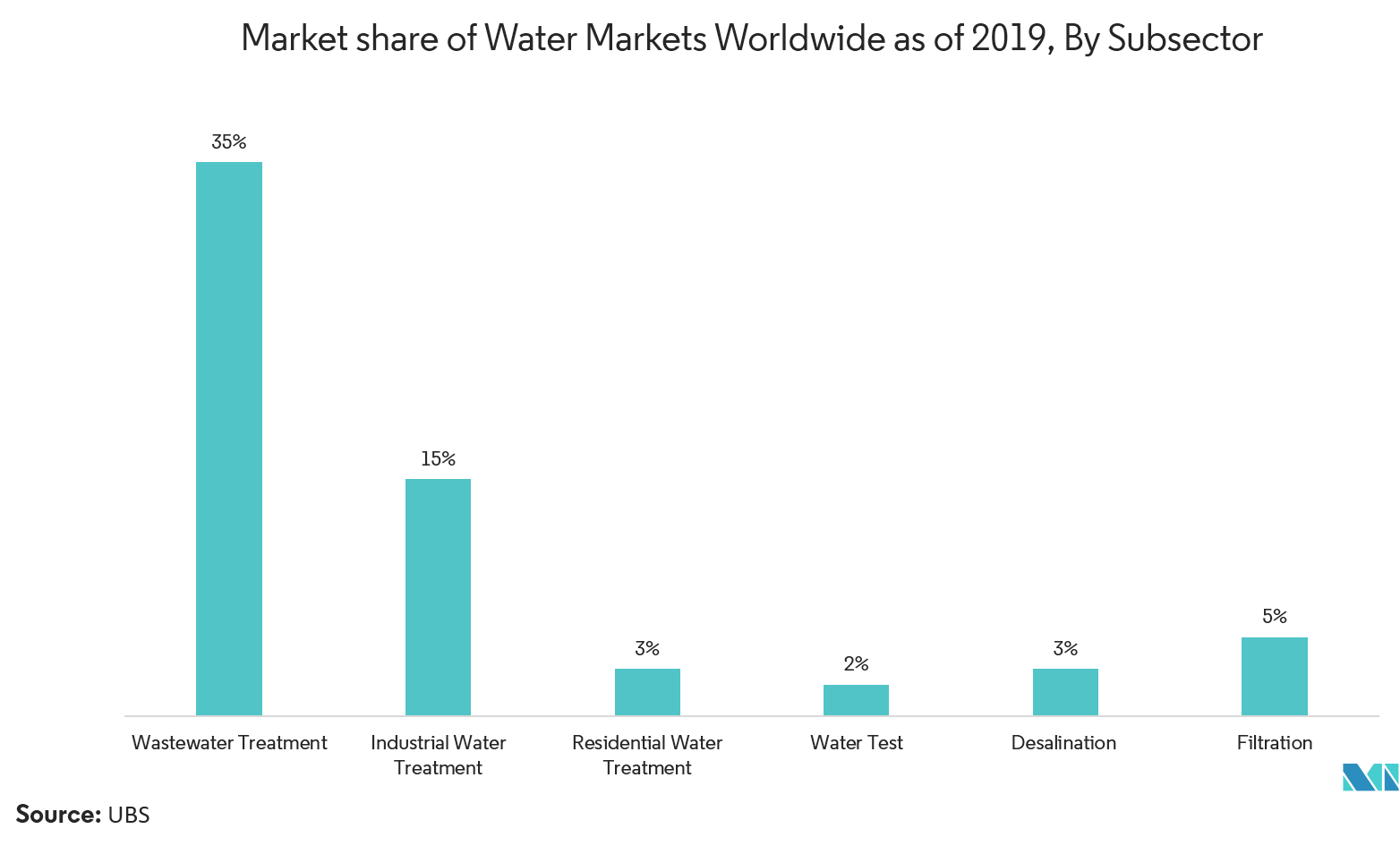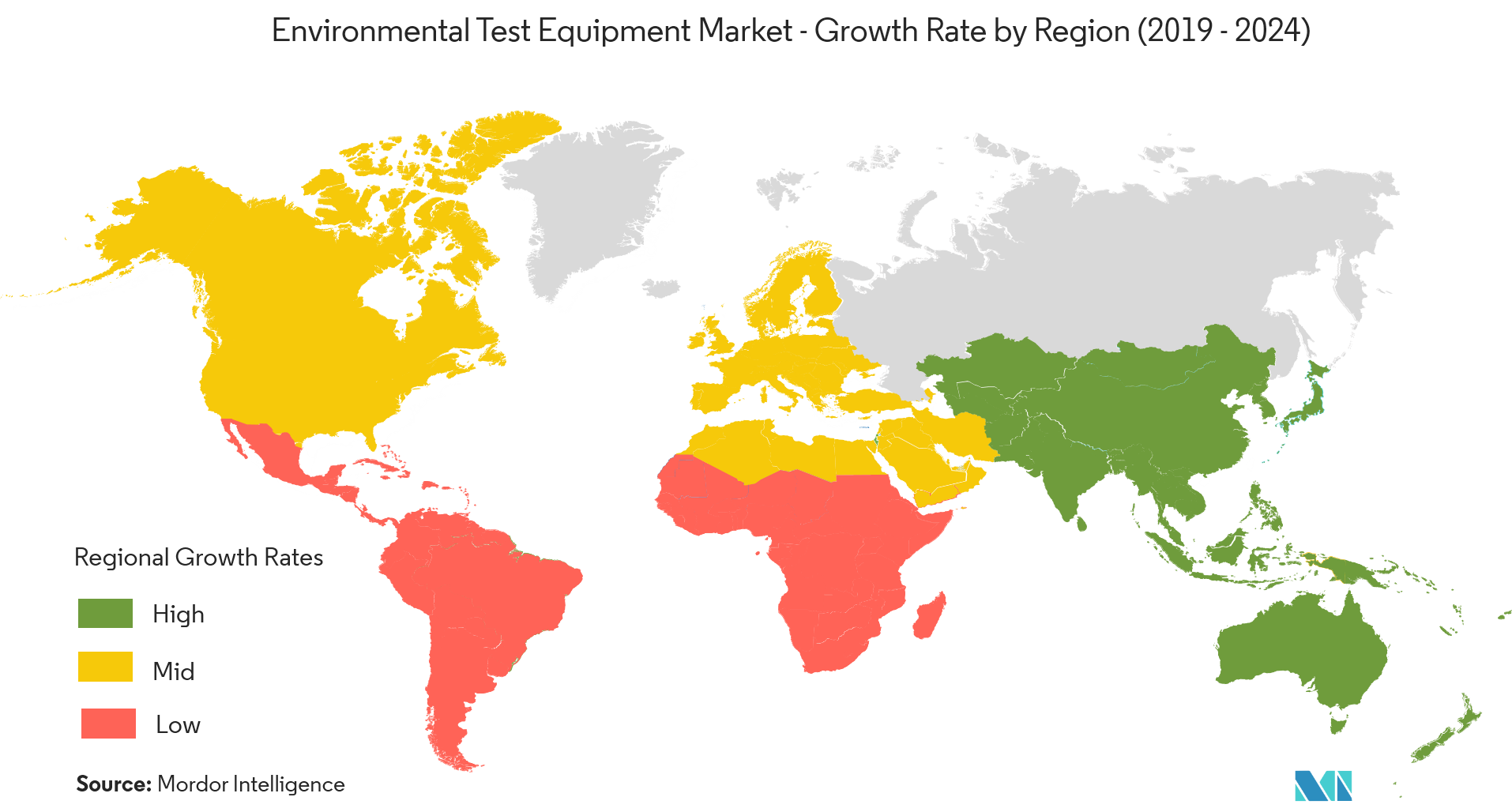Market Trends of Environmental Test Equipment Industry
This section covers the major market trends shaping the Environmental Test Equipment Market according to our research experts:
Water Testing Applications are Expected to be one of the Major Areas of Application
- Environmental testing equipment is used to test the quality of water especially in cases where the water is used for consumption in any form and screen them to detect the presence of any pesticides.
- The large scale of disposal of industrial waste and effluents into water bodies due to the increase in industrial activities worldwide has aggravated the problem of wastewater. According to UNESCO, over 80% of the wastewater generated by society globally flows back into the environment without being treated or reused.
- Further, the water systems across the world face formidable threats with more than a billion people currently living in water-scarce regions. According to WHO half of the world population is expected to live in water stressed areas by 2025. In addition to this climate change is shifting precipitation patterns and speeding glacial melt accelerating the acute water shortages that the world may face. This further highlights the importance of analyzing and treating wastewater to make them suitable for re-use.
- Water testing equipment is assessed for the presence of dangerous microbes, metals, organics, inorganics. The solutions offered by the players present in the market include E. coli & coliform detection, bioburden testing, USEPA methods for spectrophotometry, in addition to analysis of volatile & semi-volatile compounds.

North America will Continue to be the Largest Market
- The factors that have led to favorable tailwinds for Environmental Testing Equipment in North America are, growing funding for environmental testing and cleanup, increasing awareness, and the existing strict regulations of the governments.
- The Safe Drinking Water Act (SDWA) and the Clean Water Act (CWA) are the two most important environmental laws that govern water regulations in the United States. These empower the US Environmental Protection Agency (EPA) to set regulatory standards and approve analytical methods for testing of drinking water and wastewater discharged to surface water.
- According to EPA data, due to proper implementation of regulations, there have been reductions in emissions in the recent past that have led to dramatic improvements in the quality of the air. Between 1990 and 2017, according to EPA, national concentrations of air pollutants improved 80% for lead, 77% for carbon monoxide, 88% for sulfur dioxide (1-hour), 56% for nitrogen dioxide and 22% for ozone.
- The North American Region is one of the most industrialized regions of the world. Subsequently, it also has been able to develop an excellent ecosystem for industrial waste treatment to strike a balance between economics and sustainability. Ontario in Canada is the global R&D leader in water technologies. With the presence of more than 900 water industry companies is estimated that more USD 14 billion is spent on wastewater treatment research here.


